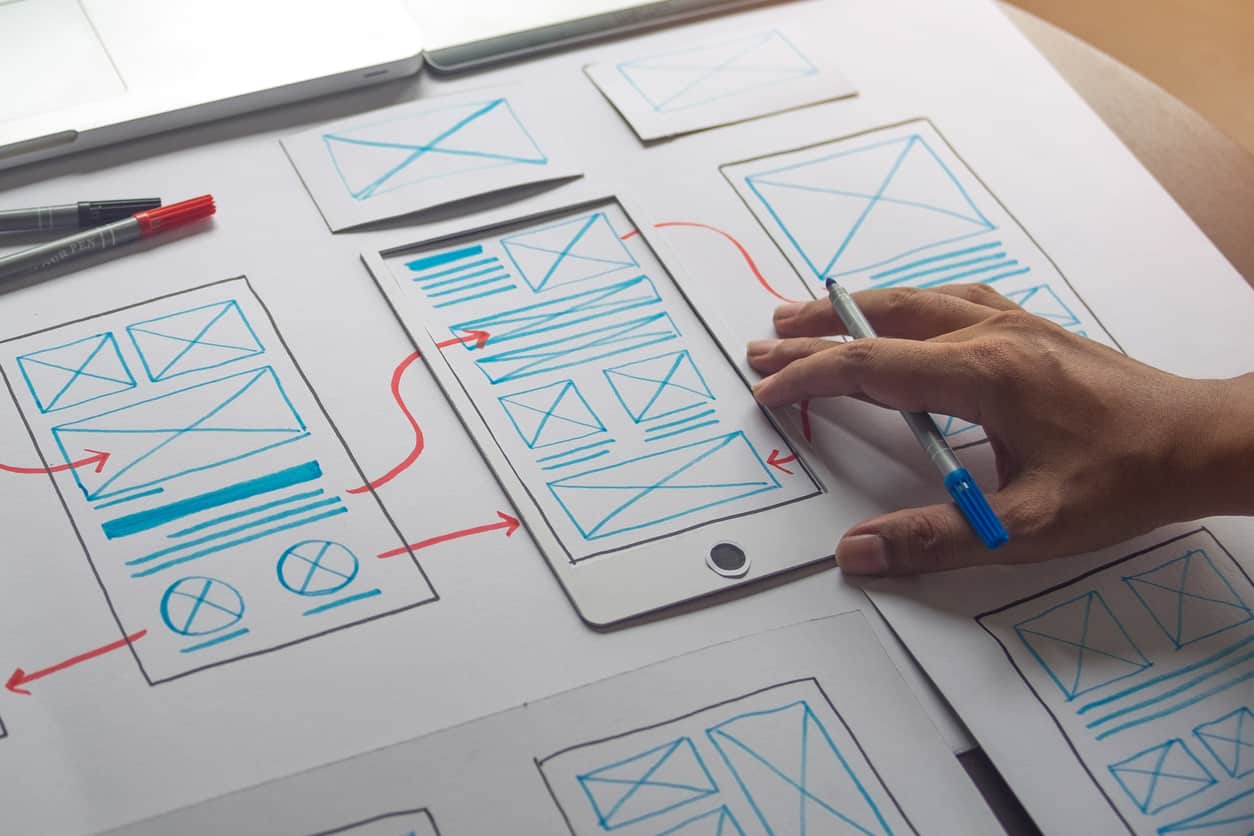B2B tech marketing can feel complicated – but it doesn’t always have to.
Here’s a simple strategy that consistently pays big dividends: create a landing page for your product or service and use it to convert paid traffic into customers.
This is one of our favorite approaches to take in lead generation, and it works in any B2B tech industry, as long as there’s an established audience searching for the solution you’re selling. We’ve used this method to drive leads for IT firms, SaaS providers, manufacturers, and more.
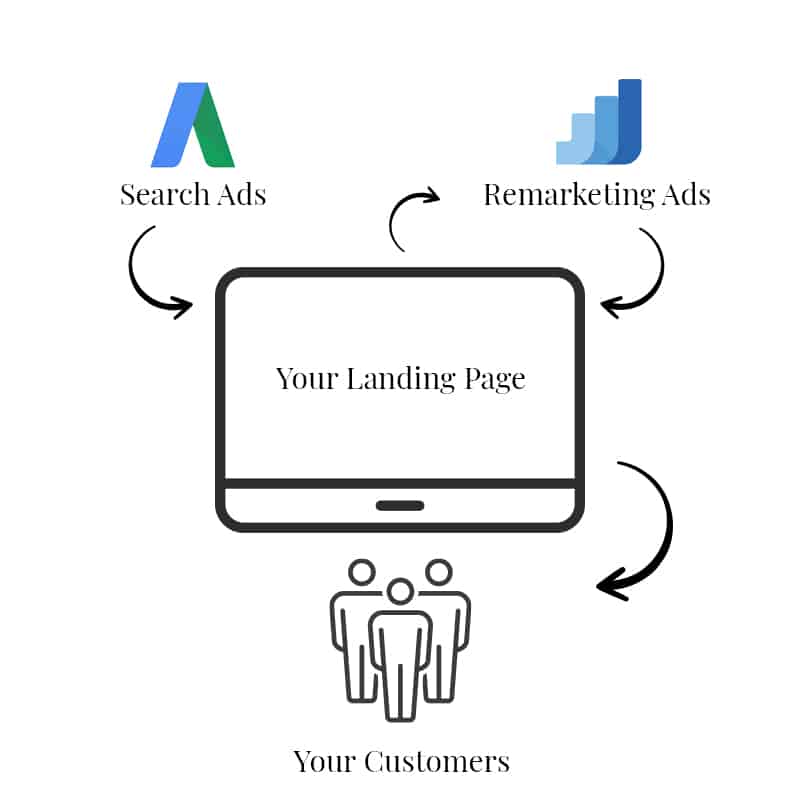
The one-page funnel can be set up in five steps:
- Identify your top keywords
- Create a landing page
- Create a top-of-funnel offer
- Drive traffic to the page with paid ads
- Retarget people who visit the page
Let’s unpack these in a bit more detail.
1. Identify your top keywords.
All right, important question: What are you going to sell on this page? Don’t frame it in your firm’s internal language. Frame it in the language of potential buyers.
Typically, you’ll want to identify the top 5-10 keywords that your potential customers would search to find your product or service. Depending on what you’re selling, though, you may choose fewer. If you generate a list of more than 10, you should likely break them into separate groups and create a different funnel.
Start by brainstorming, but make sure you rely on data as well as your own intuition. There are plenty of great tools that can help you with this. Google Keyword Planner is free and easy to use; you can generate ideas by plugging in a URL – like your site or a competitor’s page – and noting what’s suggested.

Neil Patel’s Ubersuggest is another solid tool for this.
I’d recommend focusing on keywords that are searched at least 100 times per month. If your product or service is location-specific, make sure that there are enough searches in your area to generate traffic.
The hard truth is that, if there’s not enough traffic to your page, you won’t get results. Average landing pages convert at a rate of around 2%, which means they need to be pulling in 100 visitors to consistently generate sales each month. You and I both know that your page is going to do much better than that, but let’s be safe and pick keywords that have some search volume.
2. Create a landing page.
Okay – you’ve got a list of keywords that potential customers are searching to find your solution. Now, using those as a focus, let’s build your landing page.
I don’t want to put too much pressure on you, but you should know this for your own good: Because this is a one-page marketing funnel, this one page really matters. It’s the linchpin of your efforts. So, let’s make sure you get it right. I believe in you.
This page doesn’t have to exist in your site’s navigation. It doesn’t even have to be on your normal domain; for instance, we have landing pages at places like marketinglaunchpacks.com. It should, though, incorporate your branding.
The most important thing you can do to create an effective page is to focus on your customer as you try to call them to action. If, in every aspect of page creation, you ask yourself, “What does my customer want?” you’ll at least be looking through the right lens.
In terms of language, taking a customer-first approach most often leads to an abundant use of second person pronouns. Include the word “you” a lot. Also include the keywords you’ve listed – this will be helpful in framing your offering in your customers’ language, and also in increasing your ad quality score later on.
In terms of design and images, focus on showcasing what the customer would want to see. Usually, people want to see aspirational versions of themselves; choose your images accordingly.
(Beginner’s tip: Use a landing page builder like Instapage or Unbounce. These platforms make simple landing page creation pretty intuitive with drag-and-drop interfaces.)
With those points noted, there are six critical components that your landing page should include. These may vary slightly, but, most often, your page should start at the top and work down this list.
A clear, high-level definition of your product or service.
Make this your heading. When visitors hit your page, they should immediately understand that you’re offering a solution to what they’ve been searching for.

Be specific and clear. Don’t beat around the bush. If you’re offering IT support, for example, let that fact be the first thing people see. Incorporate your keywords into this heading if possible.
The stakes of the sale.
Next, you should communicate what’s hanging in the balance for visitors. Depict the outcomes they’ll receive if they choose your solution – and what they’ll miss if they don’t. To do this well, you have to understand what your visitors want from your offering and what they fear will result from inaction or a poor solution.

Your customer’s pain points.
This is the part of the page where you start earning trust from visitors. If you can accurately express the specific pains they feel without your solution, they will connect with you. When they read this section, visitors should think, “Wow, this business gets it.” Because you do get it.
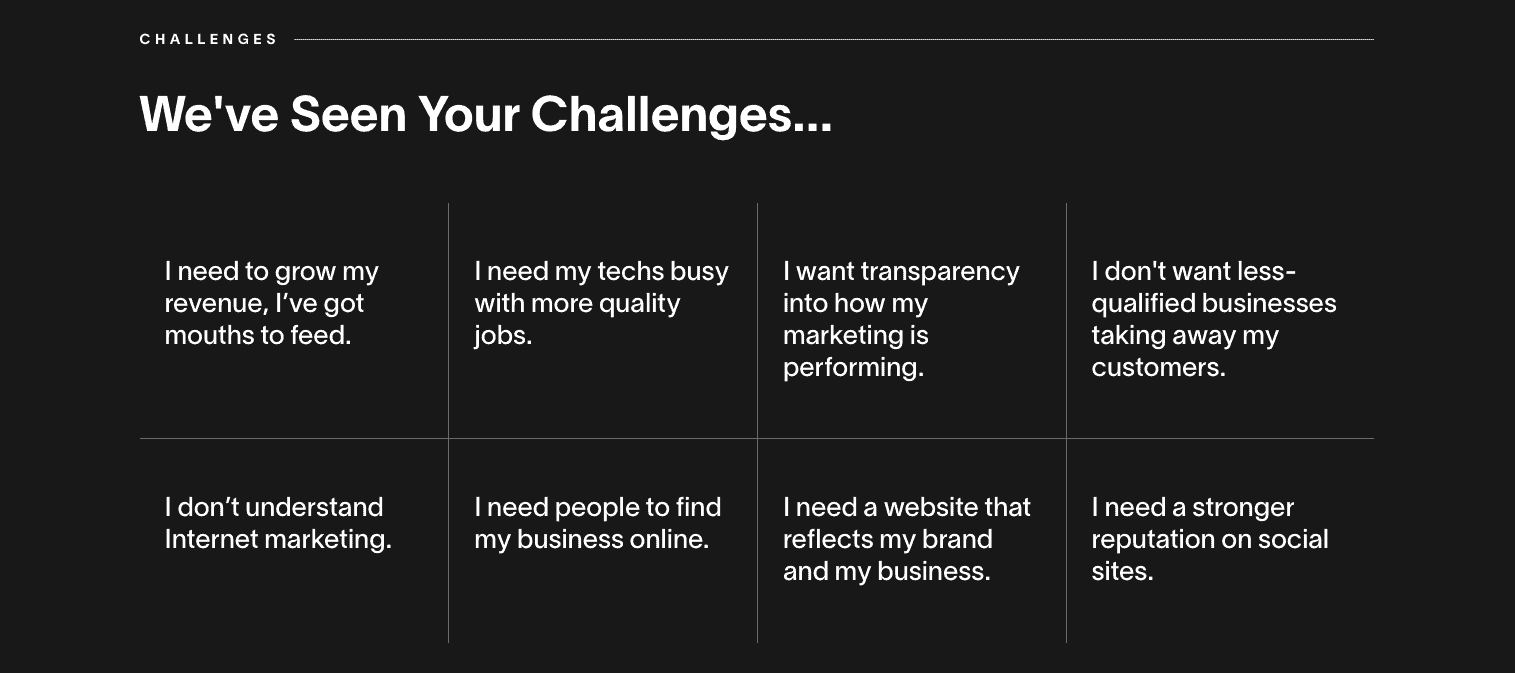
How your solution helps.
This is the part where you communicate some of the nuts and bolts about how your product or service works. If you’re selling SaaS, this is the features section. If you’re selling managed IT, it’s the service listing and delivery process. If you’re a manufacturer, it’s the tech specs.
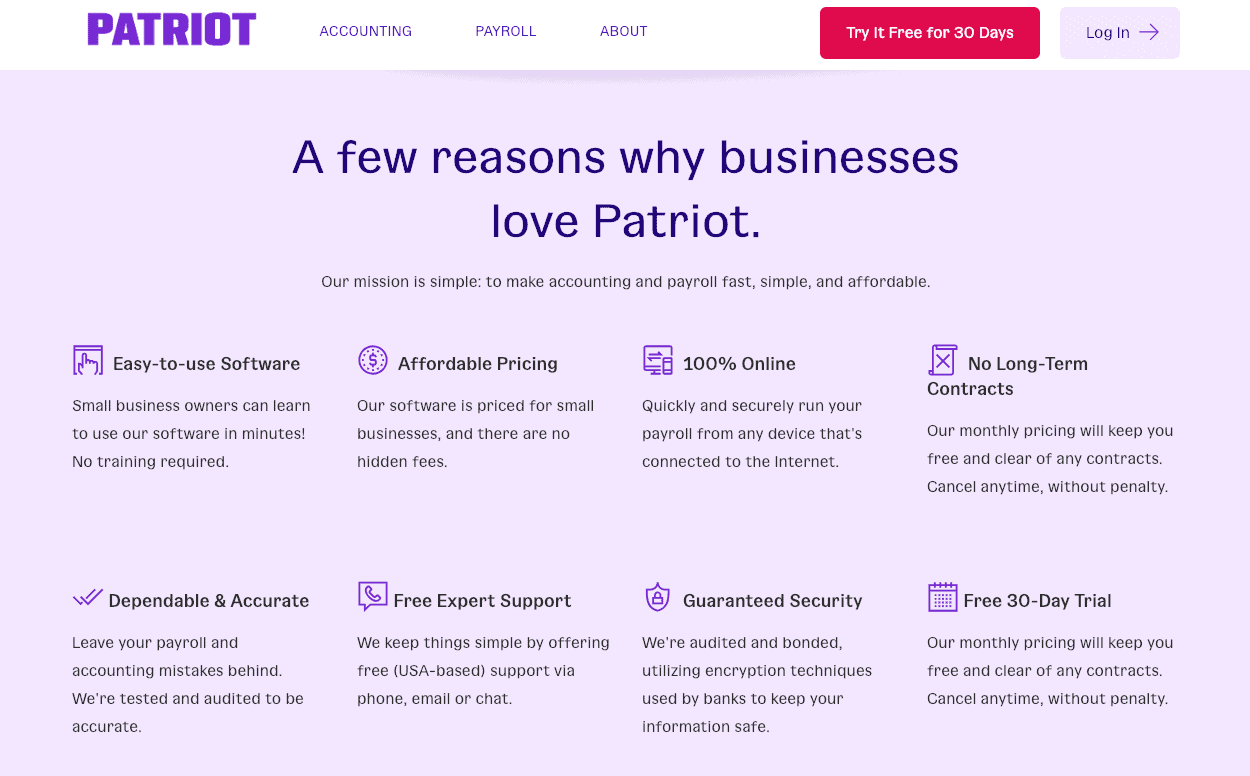
Social proof.
Here, we’re talking testimonials from satisfied customers. These are a big part of building up the credibility of your offering. Videos are a great medium for this, but images paired with a few sentences about how great you are will work just fine, too.
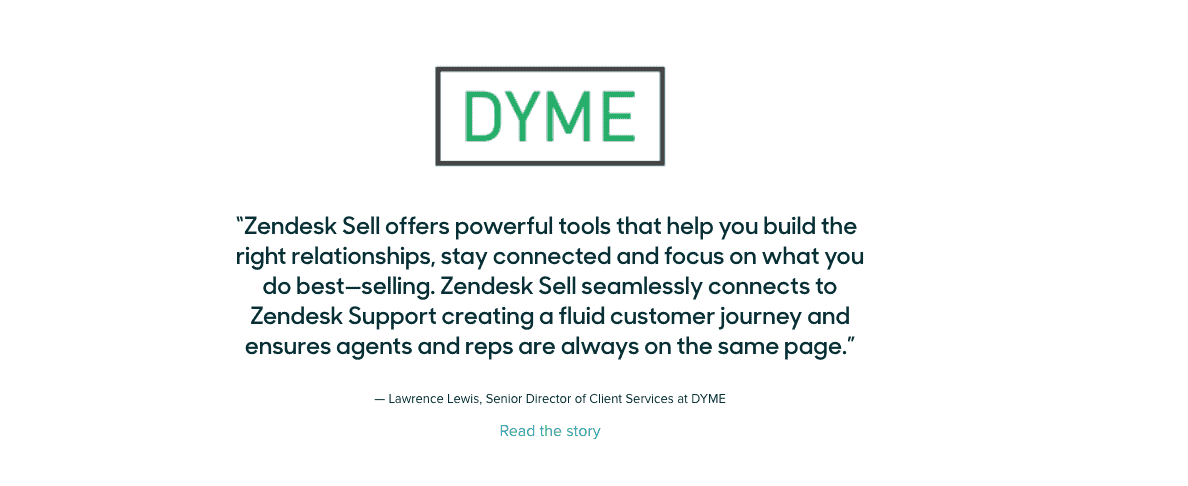
A note: Depending on your industry, you might also consider including partner logos, certifications, or press coverage as social proof. Usually, these elements work best closer to the top of the page.

Conversion points.
Finally, your page should have clear calls-to-action (CTAs), along with details on what users can expect to happen when they act.
I recommend including a CTA in a fixed header – meaning a bar that will follow your visitors as they scroll down the page and give them the opportunity to convert at any time. This CTA will probably be a button that links to a form at the bottom of your page; it might also be a phone number. You should also include your main CTA throughout the flow of the page. In all instances, keep CTA colors and language consistent.
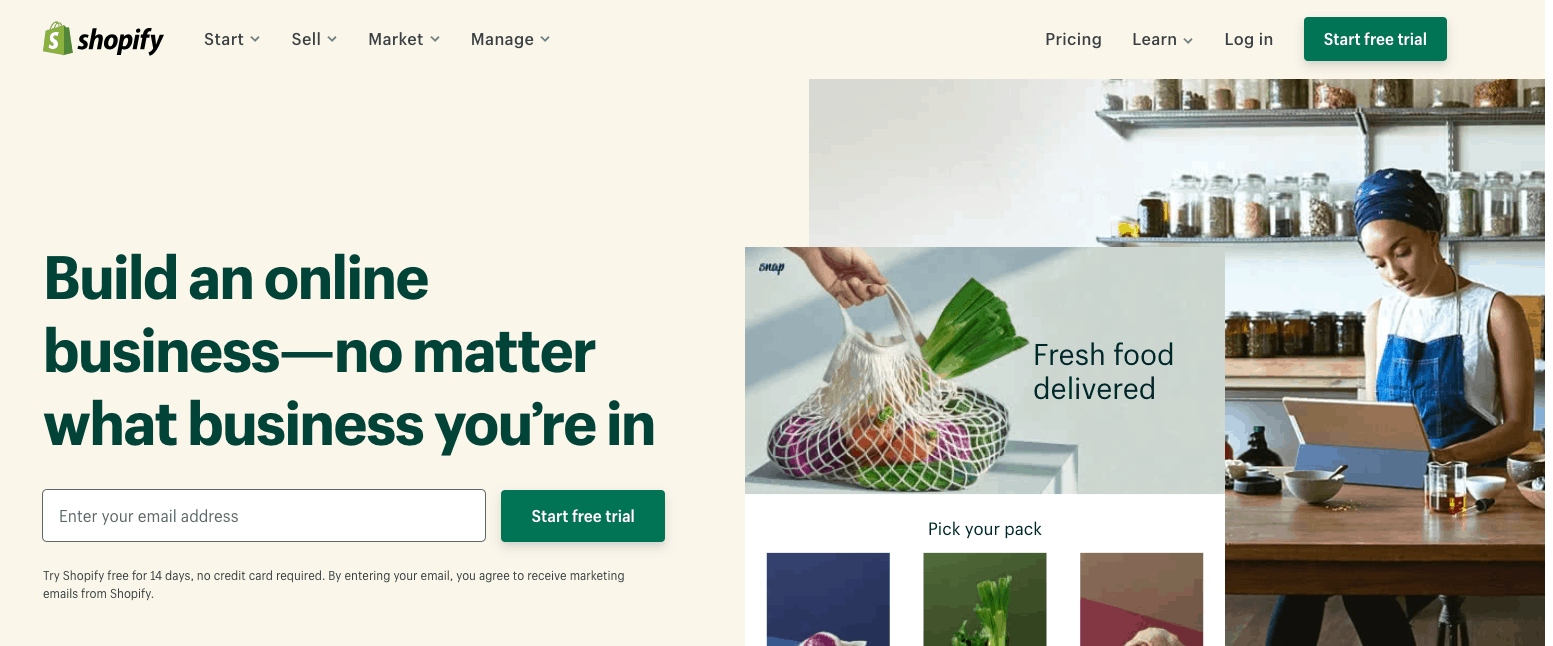
Remember: Your visitors should be able to convert on your page without needing to go anywhere else. That’s what makes this a one-page funnel. So, build your page to deliver all of the information they’ll need to take the first step in your sales process.
3. Create a top-of-funnel offer.
A top-of-funnel offer can help you to capture visitors who aren’t ready to move on your main CTA but who are interested in learning more about their problem or your solution. This isn’t a necessary component of your one-page B2B tech marketing funnel, but it can be a really valuable piece in helping your funnel live up to its full potential.
This will be some kind of content piece that users can access in exchange for their email address; it might take the form of a whitepaper, ebook, or brochure. If you’re a SaaS provider, you might consider using a video demo of your product. This piece should be crafted to answer the most burning question visitors to the page would have.
Having a top-of-funnel offer on your page can increase the page’s conversion rate. If you’ve built a page where the only action is to move ahead with your solution and only 1 of the 100 people who hit your page each month are ready for that, your page will only convert at 1%. If you have a higher-funnel piece – something that provides value and additional info but doesn’t signal “I’m ready to buy!” – you may be able to capture more contacts.
Tactically, I’d recommend only requiring an email address to access this offer. You can build this offer into the flow of the page or make it a popup; if you go the popup route, opt for showing it only on exit intent (meaning it will appear when the user moves their mouse up toward their browser controls before they click away).
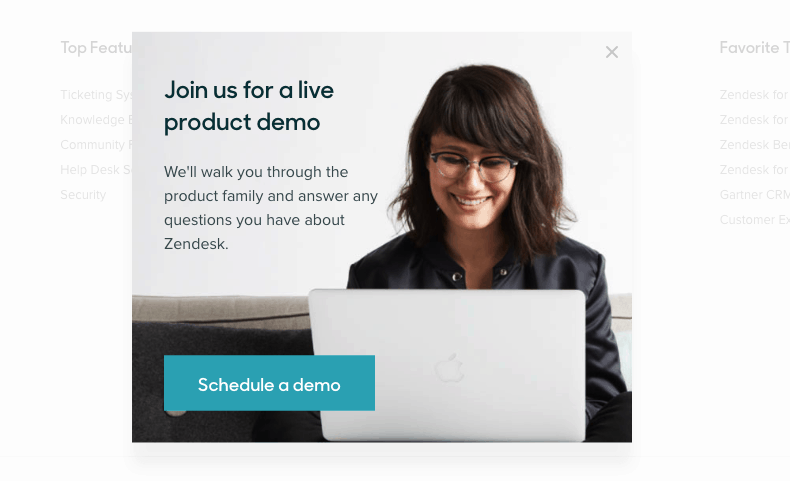
4. Drive traffic to the page with paid ads.
I’m going to avoid getting too far into the weeds in this section because I don’t know what you’re trying to sell. What you’re trying to sell will determine much of your tactical approach – what locality you’ll target, what your budget will be, and what kind of campaign strategies you’ll adopt.
I do know, though, that you want to drive people to your page who have high purchase intent. You’re building a one-page funnel, so you want to send in people who are pretty close to clicking the “Buy” button.
That means that, for most B2B tech firms, the top platform to consider is Google Search Ads. Showing in Google searches is about the closest you can get to targeting people who are ready to take action. You can keyword target in Google’s Display Network and on YouTube, too, but on these channels it’s harder to hit users as they’re searching for a solution.
In general, I’ve found social ads to be less effective in generating conversion on one-page B2B tech marketing funnels. That’s because on social media, users aren’t actively searching for your solution – they’re usually just browsing, so they’re less ready to act. Social ads can work well for lower-ticket items (like event signups, top-of-funnel offers, or low-cost consumer goods), but for the purposes of your one-page funnel, stick to search.
All right – you’re running search ads. Your keywords will form the foundation of your ad strategy. We began with 5 to 10 that we used within your landing page; while you’ll see some recommendations to get to 30, I think this is a good place to be to start. The key is that there’s enough search volume. If your keywords taken as a group generate 10,000 searches per month, you’re good. If they don’t, you may want to consider adding more.
You can tease out the funnel and start projecting results. For instance, let’s say you can bid to appear in all 10,000 searches for your keywords (definitely not a given). In that case, at an industry-standard click-through rate of 3%, you’d bring 300 people to your site. If your landing page is converting at an industry-standard rate of 2%, that’s 6 new leads each month.
Obviously, the more you can increase your CTR and conversion rate, the more leads you’ll generate. This takes ongoing management. You should review your ads’ performance at regular intervals, add negative keywords to ensure you’re not showing for irrelevant searches, and increasingly gear your copy toward what’s working best. If people are reaching your landing page but not converting, you should consider revising your messaging.
(Pro tip: Hotjar can be helpful in landing page optimization. There’s a free version that’ll let you get preliminary data about how users are viewing and interacting with your page. A tool like this will help you to tell if your visitors are bouncing at certain points or getting confused by certain page elements.)
5. Retarget visitors to the page.
This is the last step in implementing your one-page B2B tech marketing funnel: Retarget the visitors to your page with additional advertising.
Retargeting (or remarketing) is a favorite tactic of marketers for good reason. It works. If you aren’t familiar with the concept, try searching for something on Amazon and then checking Facebook. The odds are good that, as you scroll through your timeline, you’ll see an ad for the product you just looked at. When you see something multiple times, you’re more likely to buy it. My Steelers action figures and I can personally testify to this.
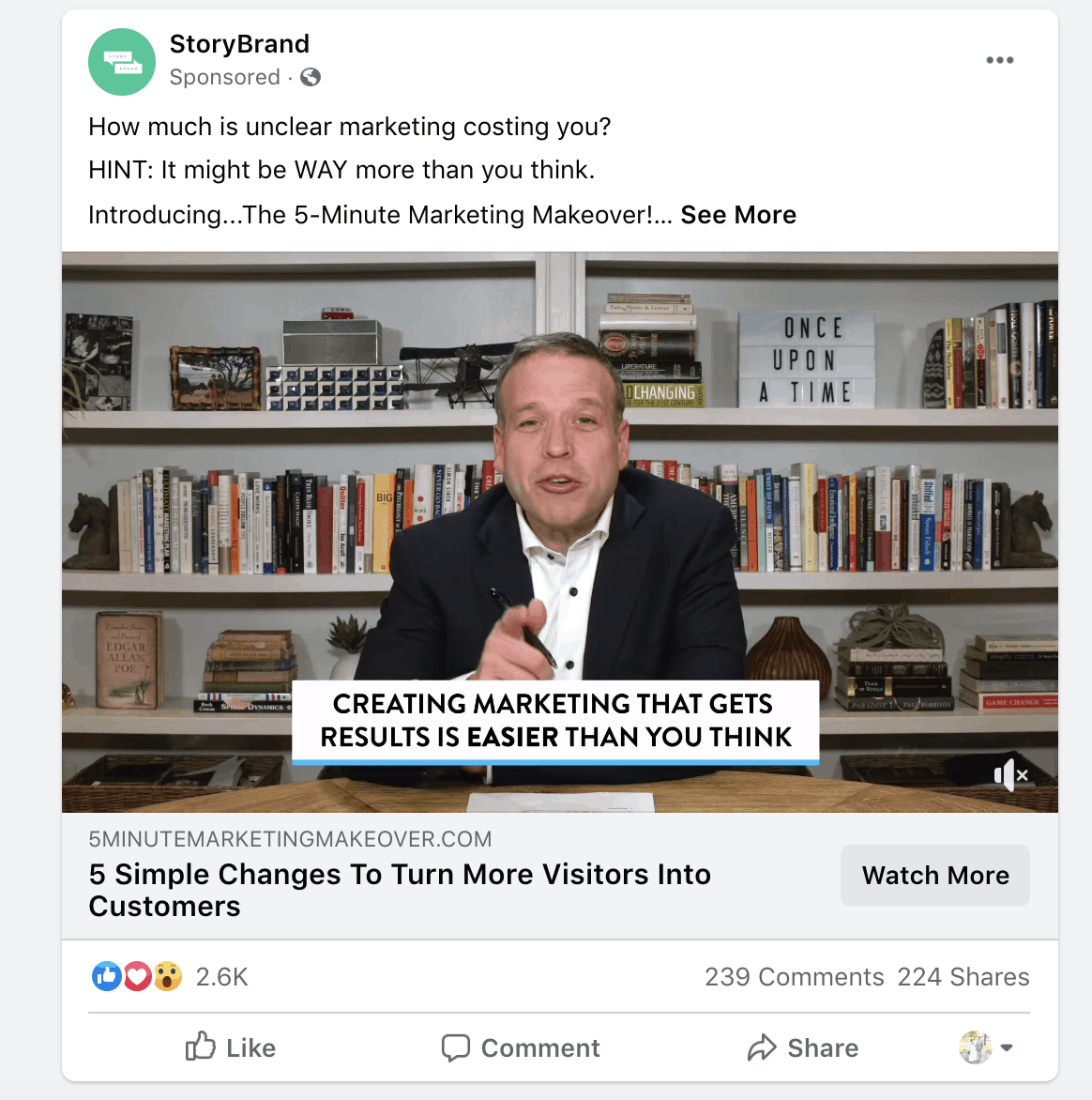
For your purposes, retargeting visitors on social media may be worth considering; you’ll generally get a lower cost-per-click via retargeting than if you were targeting new audiences, and people who have familiarity with your business will be lower in the buying funnel. That said, I’d still opt for Google’s ad engine and start with a display ad remarketing campaign.

Google’s display ads tend to be incredibly cheap (especially compared against search ads). So, create image-based ads that represent your core message and set them to show to people who visit your page. It’s a great way to stay top-of-mind with potential buyers, and, again – it works.
B2B tech marketing can be complicated. But it doesn’t have to be.
Follow the five-step process above and you’ll have a good start on generating leads for your B2B tech business. A one-page marketing funnel is a simple approach, but it’s been proven to work again and again.
Of course, to get the most out of this does take effort and expertise. If you want help, reach out, and let’s get a free consult scheduled to assess your current efforts.
New business is out there, and your one-page funnel can bring it in. You’ve got this.
